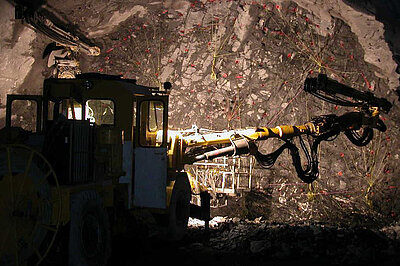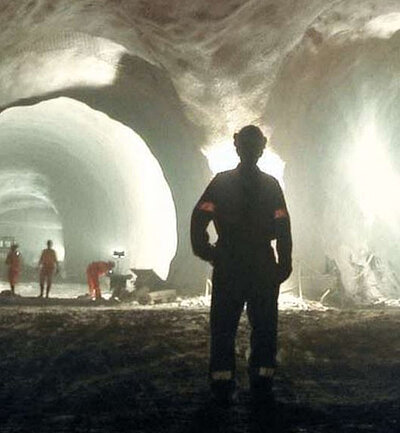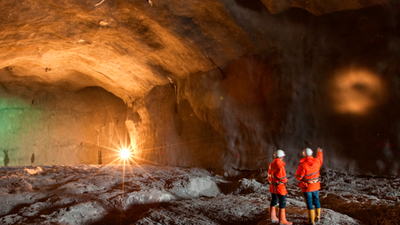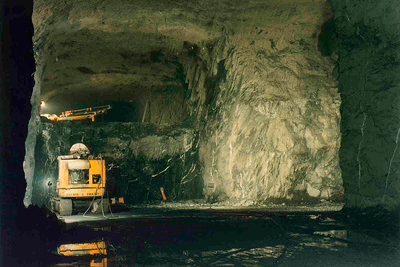Underground Space
Infrastructure systems, industrial plants, research facilities, hydroelectric power stations, recreational facilities, protective structures, storage facilities, waste disposal facilities and quarries have some joint characteristics. They need large areas, which are becoming ever scarcer. The consequences are significant land acquisition costs.
If situated near residential areas, resistance to the planned facilities is likely, leading to new obligations and delays. Conditions placed on the environmental compatibility of facilities, such as reducing emissions, lead to expensive measures. Some of the facilities listed need an increased level of protection for the material or processes inside. Finally, some require uniform environmental conditions with respect to climate and low vibrations.
Building a facility in an underground cavern can be the optimal solution to meet these characteristics and requirements – underground facilities need less land, have less impact on the surrounding countryside, prevent certain objections and obligations, offer uniform environmental conditions, lead to fewer emissions and offer very high levels of protection.
Our expertise in Underground Space

The use of the facility determines the location and the layout of the cavern. Usually, large dimensions are necessary, which are always challenging to build.
Underground caverns require careful analysis of the rock mass behaviour and the support installed, especially in poor ground conditions.
For underground structures, access, supply and disposal, ventilation, cooling and safety systems must be designed differently than for structures above ground. Equally, the maintenance and upkeep of underground caverns have different characteristics. A further challenge of building facilities underground is to correctly recognise the requirements resulting from the purpose and the technical equipment in the system, so that a technically sound but cost effective solution can be found. This is an iterative process.

Amberg Engineering has over 50 years of experience and in-depth knowledge of all types of underground cavern construction.
This experience has been gathered over decades, especially in the construction of complex military underground installations – where we are one of the leading engineering design companies in the world.
This, combined with our continuous search for innovative solutions, allows us to integrate the latest developments when delivering our services and to create cost-effective, requirements-based solutions.
Underground caverns must be adjusted to meet specific requirements. For this reason, it is important to us to understand the needs of the client, user and operator, to reach the best solution. Therefore, we develop the facility in close co-operation with our clients and their planners and specialists.
Services in Detail
Amberg Engineering realises innovative, customised solutions for caverns. From planning and realisation to operation, our specialists will support you throughout the entire lifecycle of a structure.

Phase 1 – Planning
- Geological survey
- Feasibility study
- Preliminary and schematic design
- Invitation to tender, tender documents
- Geotechnical and structural analysis
- Stability analysis and evaluation
- Dynamic analysis
- Fire protection concepts and evaluation
- Safety concept
- Evacuation planning

Phase 2 – Realisation
- Detailed design
- Construction supervision
- Project direction
- Control surveying
- Vibration and shock monitoring
- Resource planning
- Quality management

Phase 3 – Operation
- Facility inspection
- State assessment
- Conservation of value planning
- Maintenance planning
- Renewal and refurbishment
- Modification

Services in all phases
- Project review
- Project management as the client representative
- Controlling
- Risk management
- Consulting
- Training
- Safety evaluation
references

- Wafer Fab, microchip factory (Switzerland)
- Military facilities (Switzerland)
- Underground quarry, Schollberg (Switzerland)
- Underground quarry, Zirl (Austria)
- Multifunction stations, Gotthard Base Tunnel (Switzerland)
- Underground visitor and event cavern, Gonzen Bergwerk (Switzerland)
- Underground research facility, Hagerbach Test Gallery Ltd. (Switzerland)









